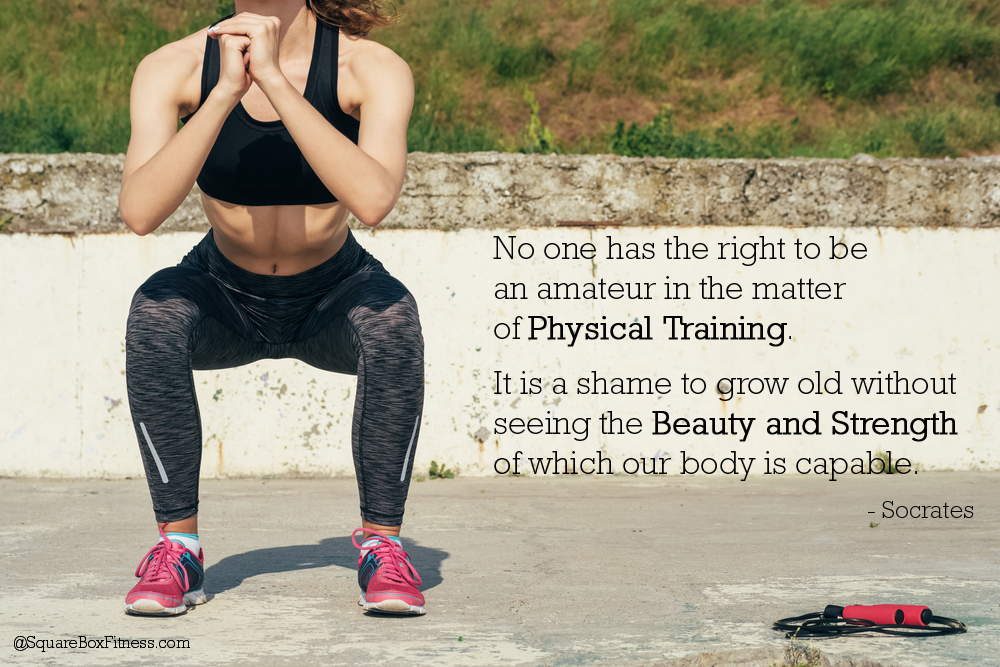This week’s workout was intense, and many were impressed by the simple yet effective exercises. Using big muscle groups with explosive actions meant that it was impossible to sustain the exercise for the entire minute.
Welcome to HIIT!
High-Intensity Interval Training (HIIT) is when you alternate between high and low-intensity exercise or between high-intensity exercise and a short period of rest.
This type of exercising is efficient because it increases the body’s need for oxygen beyond the breath, therefore creating an oxygen deficit.
The body must then replenish the deficit. Oxygen to the muscles can be replenished by the body between 4 – 45 seconds, depending on the intensity of the exercise, but it can take as long as 6 minutes in some people.
The true benefit of HIIT exercising is the body continues to use energy to up to 48 hours post workout to get the body ready for the next HIIT!
Those of you who are fans of Dr. Michael Mosley, creator of the 5:2 Diet, may have seen his BBC series on “The Truth About Exercise”. In the program Dr. Mosley Trials the HIIT protocols on a bike; 3 times per week, he cycles 20 seconds at full speed, rests and repeats two more times.
Dr. Mosley proved that 3 minutes of intense exercise per week was enough to affect insulin levels dramatically.
What wasn’t made clear on the program was that it would have taken the good Doctor about 15 minutes to do each 3 x 20 second HIIT workout after factoring essential rest, warm up and cool down.
This type of HIIT isn’t for everyone, however, by taking the intensity down a little and increasing the time slightly, increasing the resistance, the benefits of the HIIT protocols are achievable by most people. Our Shape-UP program uses a modified HIIT protocol.
The Shape-UP Willoughby HIT program follows the more traditional HIIT protocols and if you need an afternoon “pick-me-up” on Wednesday and have 30 minutes, give it a go at the Willoughby Park Centre at 1.45 pm.
Feeling light headed and nauseous?
Exercising should feel natural but challenging; I go against popular belief that the onset of nausea is an indication of “proper” exertion.
Exercising to the point of feeling sick is counterproductive and unnecessary, however, sometimes we can be caught off guard when we are trying our best to increase fitness.
Continual dizziness and nausea during exercising is NOT normal and if these symptoms persist stop immediately and consult your physician.
If there is no underlying medical condition, feeling dizzy or light-headed can be the result of the body not being able to get enough blood and oxygen to the brain. It is a function of fitness and will improve providing intensity meets your body’s current capability.
Overexertion causes the body to become dehydrated through sweat and loss of electrolytes and the stop and start nature of interval exercising causes blood pressure to fluctuate.
Therefore it is advisable to reduce the intensity rather than stopping exercising abruptly. Sudden stops does decrease the heart beating, but your blood vessels remain dilated, leading to lower blood pressure and the feeling of dizziness.
Feelings of nausea can be caused by the body not having enough calories to compensate for the amount of physical activity being performed at the time.
Having a light carbohydrate meal 30 minutes before your exercising can improve your ability to exercise, improve endurance and ultimate fitness.
This type of exercising is physically demanding, therefore your body reacts by increasing blood flow to where it is needed most, that is; your muscles, heart, lungs, and lastly your brain. To do this it diverts blood from visceral organs such as your stomach.
It is thought that when the stomach is deprived of the oxygen it requires to function, the feelings of nausea and sometimes vomiting result.
Feeling sick during a workout is not what Shape-Up is about, it is about challenging the self to test and improve fitness level to enjoy the full potential of living well.
Testing Fitness Limits
HIIT is a powerful tool in improving fitness quickly; however it requires the knowledge of pushing through comfortable exercise levels of exertion and exercising at higher intensity safely.
With this intense exercising, there is some risk. However, the risk of “taking it easy” and remaining sedentary is far greater.
The World Health Organisation (WHO) ranks Ischaemic heart disease as the leading cause of deaths worldwide (7.4 million or 48.6% in 2012).
Based on a study published in the New England Journal of Medicine, 1982, death by exercise occurs once in every 1.5 million exercise session.
Applying the data in the study to the current WHO statistics, means only 0.008% of the 7.4 million died from heart failure during exercise. Very rare!
The benefits of exercise far outweigh the risks. Being physically fit is empowering. It gives you control to live your life without the limitations of the many physical and psychological illness that go with a sedentary life.
Live well and eat well
Anna


Recent Comments